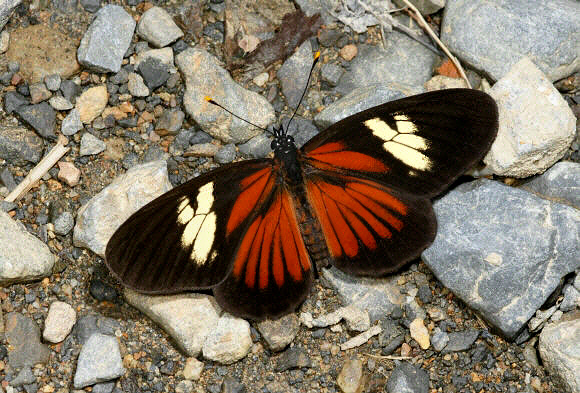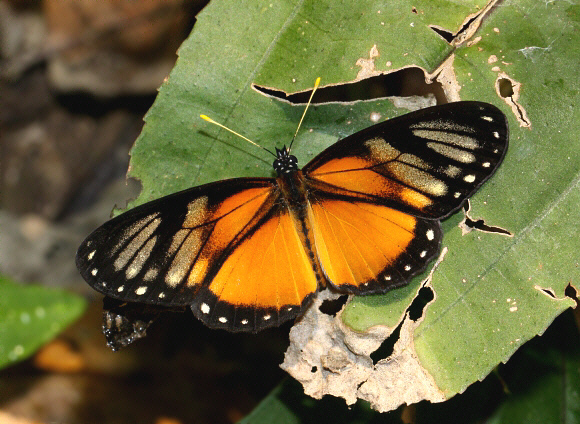
Introduction
The tribe Melitaeini is of worldwide distribution. It includes the Crescents and Checkerspots of North America, and also many familiar European species such as the Marsh, Spotted and Heath Fritillaries.
Eresia are closely related to Castalia, Anthanassa and Janatella, in fact that these genera can only be distinguished by microscopic examination of the male genitalia.
The 20 Eresia species fall into 2 distinct groups. Some e.g. nauplius are black with bands or patches of white. Most however are strongly marked in black and orange, and regarded as Batesian mimics of toxic Ithomiinae or Acraeini.
Eresia datis is an extraordinarily variable butterfly. Its 10 subspecies and their numerous forms all mimic different Ithomiinae, Heliconiinae and Acraeini species. The similarity between the upperside wing patterns of Eretis datis phaedima and the Acraeine species Actinote anteas e.g. are too strong to be coincidental; as is the similarity between the southern race Eresia datis corybassa with certain forms of Heliconius melpomene and H. erato.
Eresia datis is distributed from Colombia to Bolivia. Subspecies corybassa is found in southern Peru and Bolivia, while subspecies phaedima is found in central / northern Peru and Ecuador.
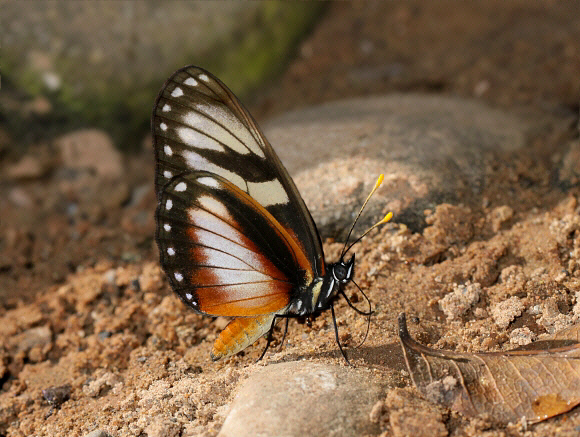
Habitats
This is a sun-loving species found in cloudforests at elevations between about 500-2400m. It tends to fly in forest edge habitats, e.g. along roadsides and riverbanks.
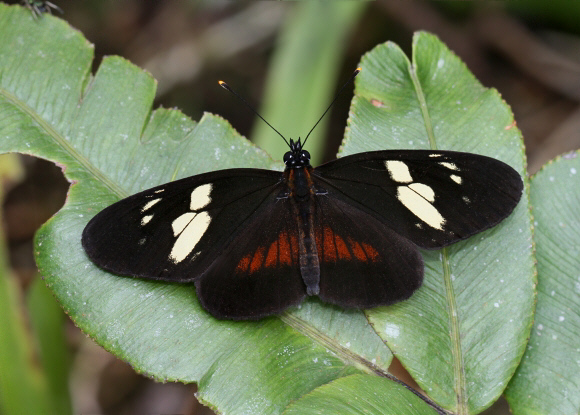
Lifecycle
I have no information specific to datis but the lifecycle is probably similar to that of ithomioides, in which the pear-shaped eggs are cream coloured, and laid in batches of up to 70 beneath leaves of Pilea ( Urticaceae ). At least one other Eresia species – coena, oviposits on Justicia ( Acanthaceae ). The larva of ithomioides is dark green with orange spikes and white dots along the back. The head and legs are orange. Its pupa is olive-brown, shiny, and suspended by the cremaster from stems.
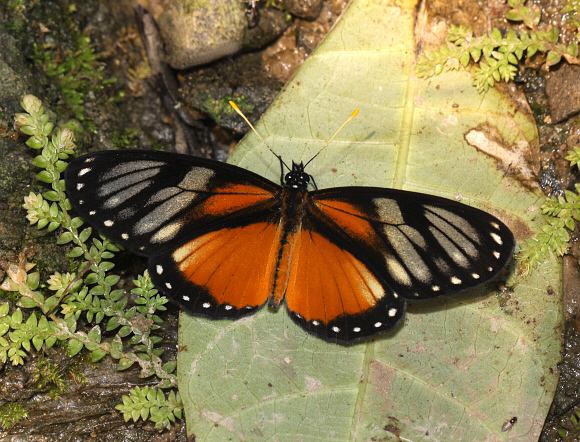
Adult behaviour
The butterflies have a slow fluttery flight. They are usually only encountered in sunny conditions, and can be seen as singletons flying along roadsides or other forest-edge habitats. Males are often seen imbibing mineralised moisture from damp sand or rocks. They usually keep their wings closed when feeding, but sometimes bask on the ground or on low vegetation, with wings fully outspread, when clouds temporarily obscure the sun.
